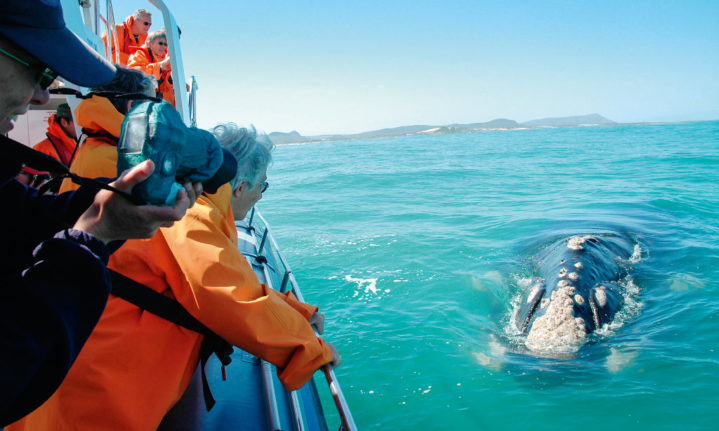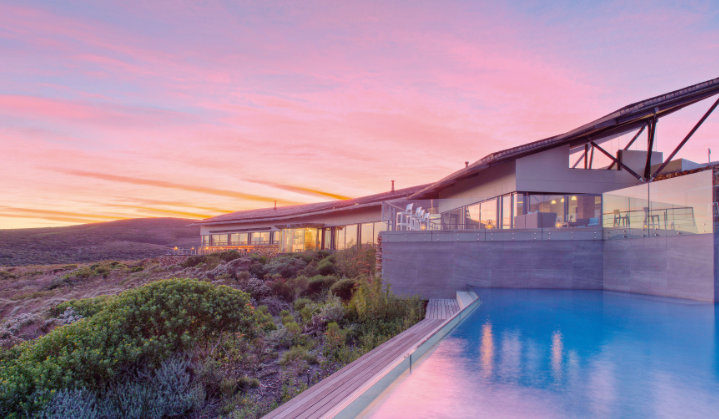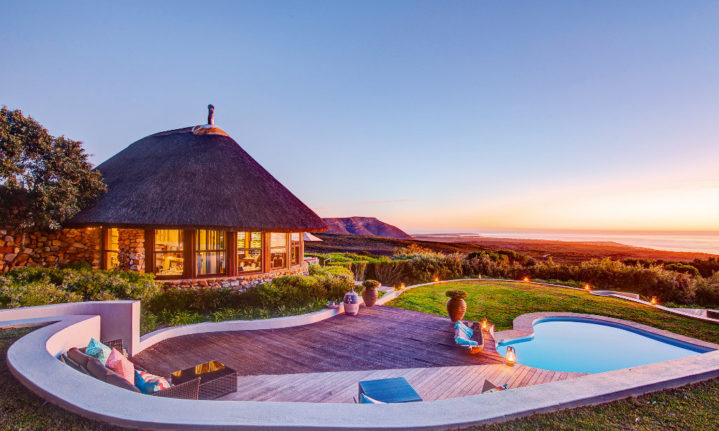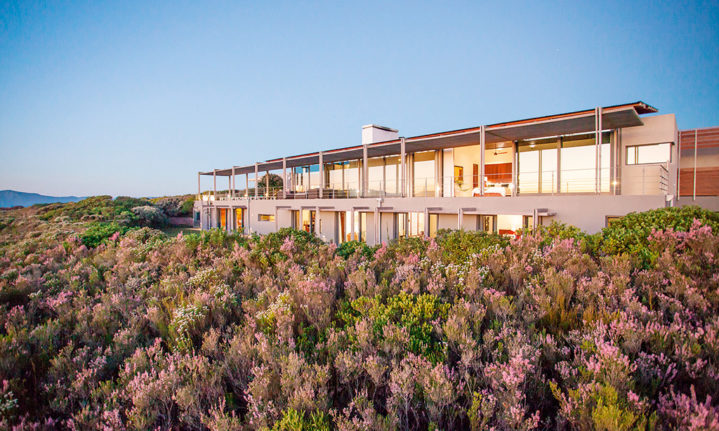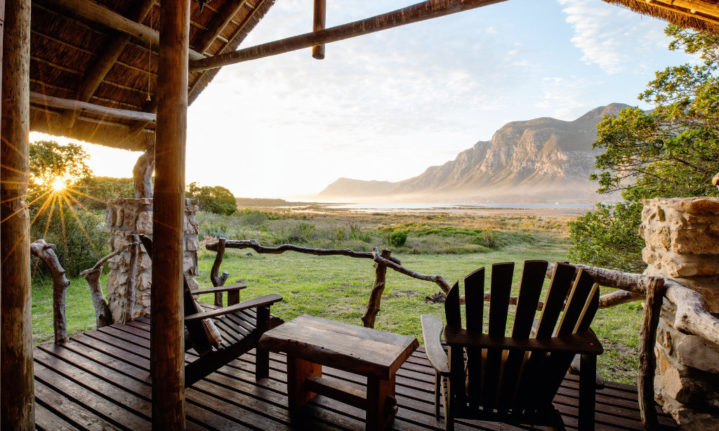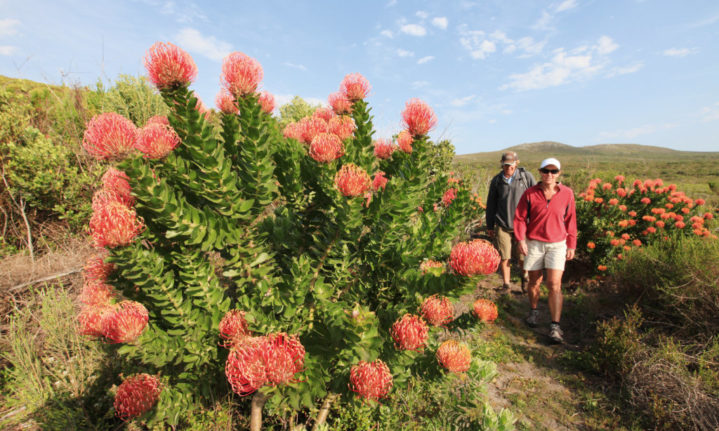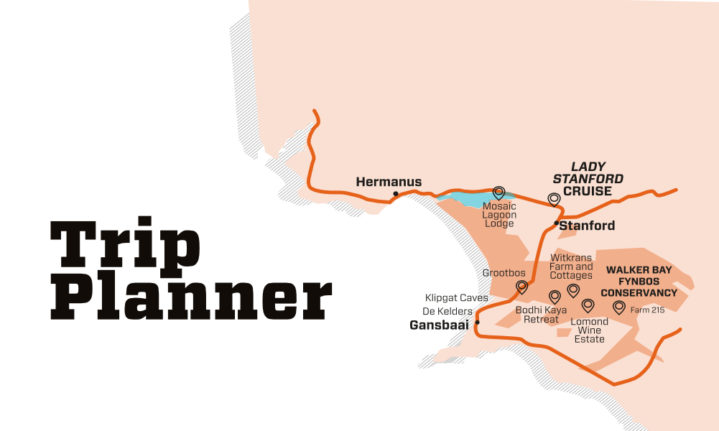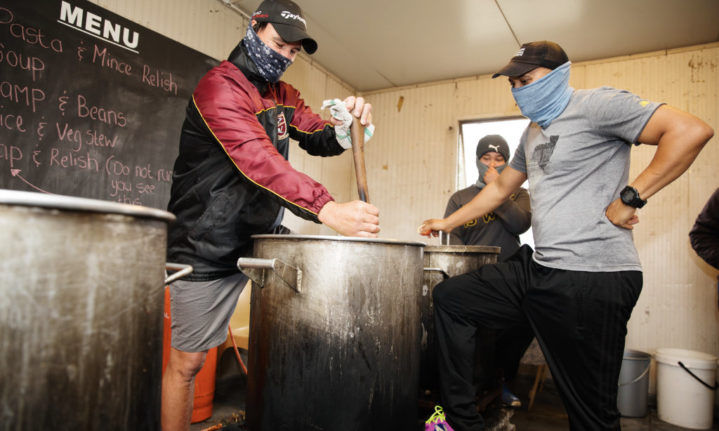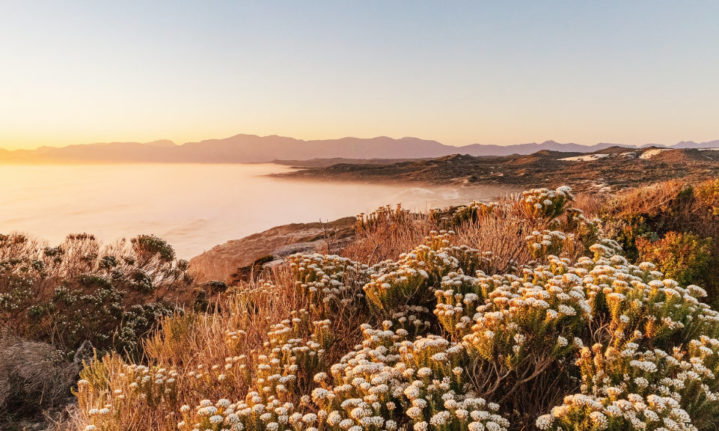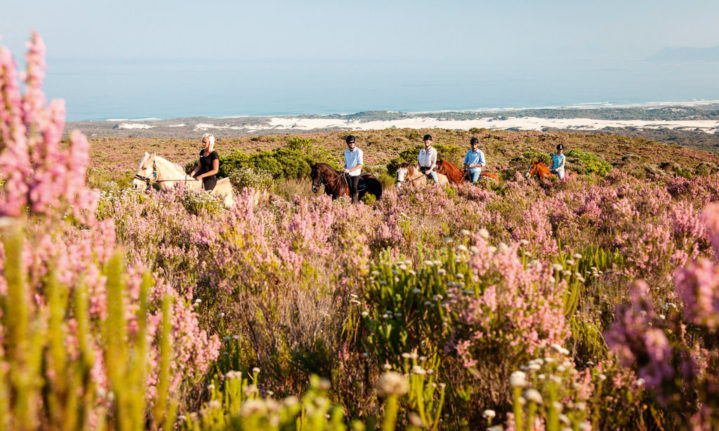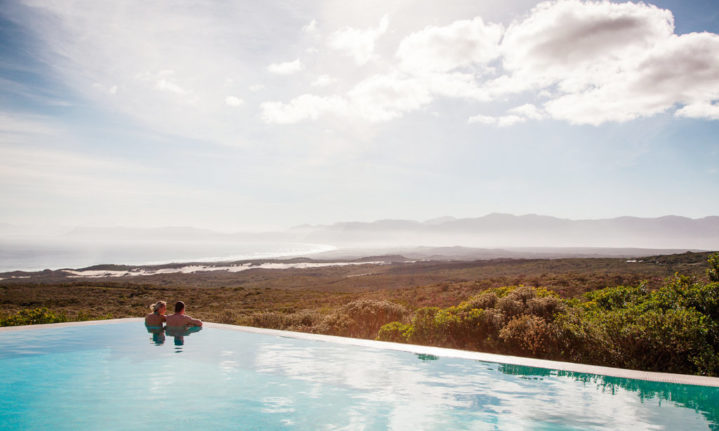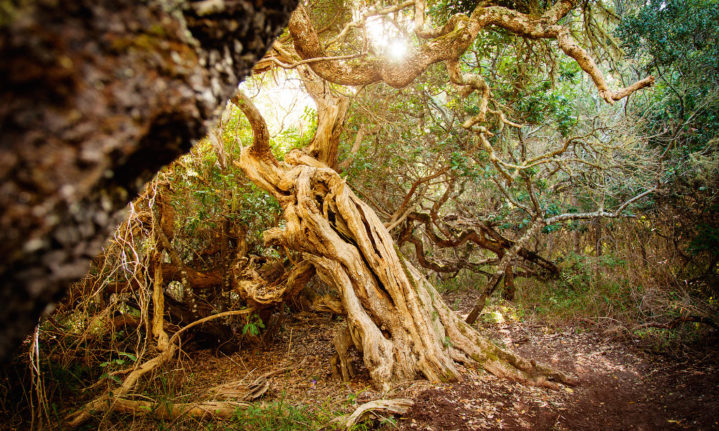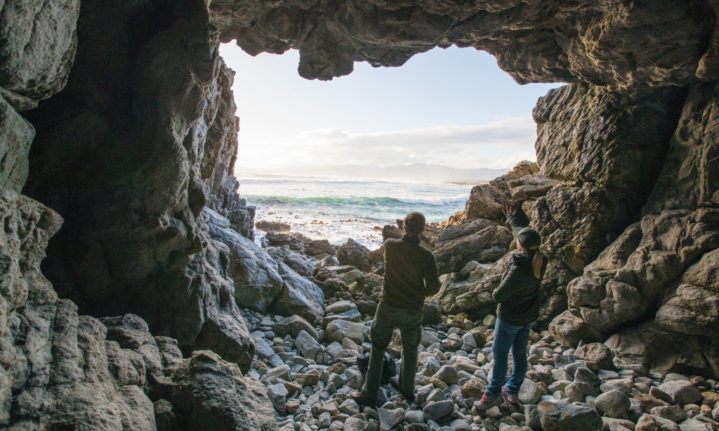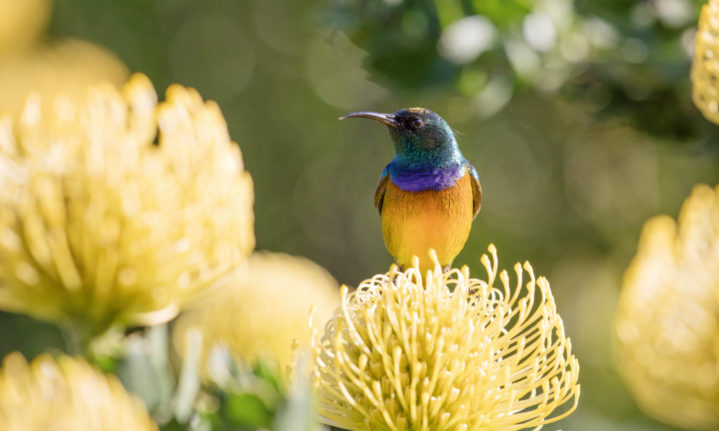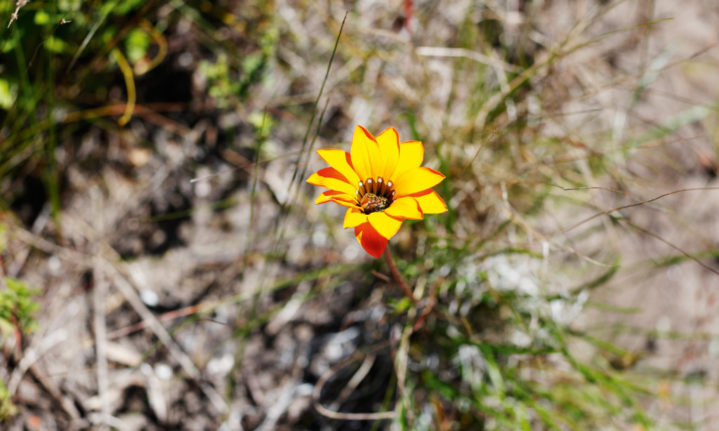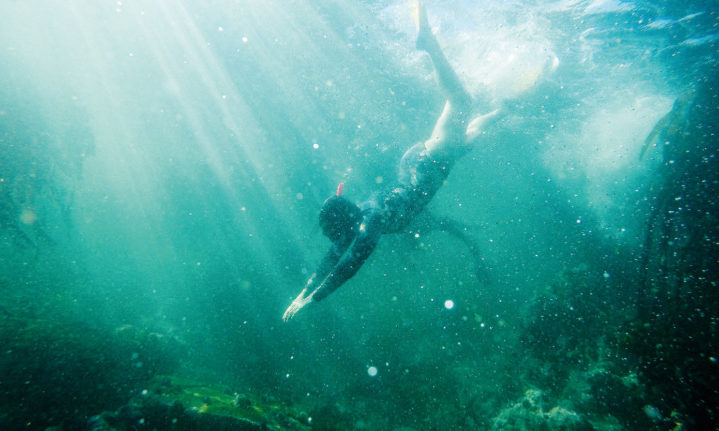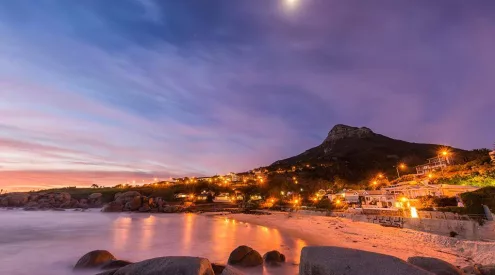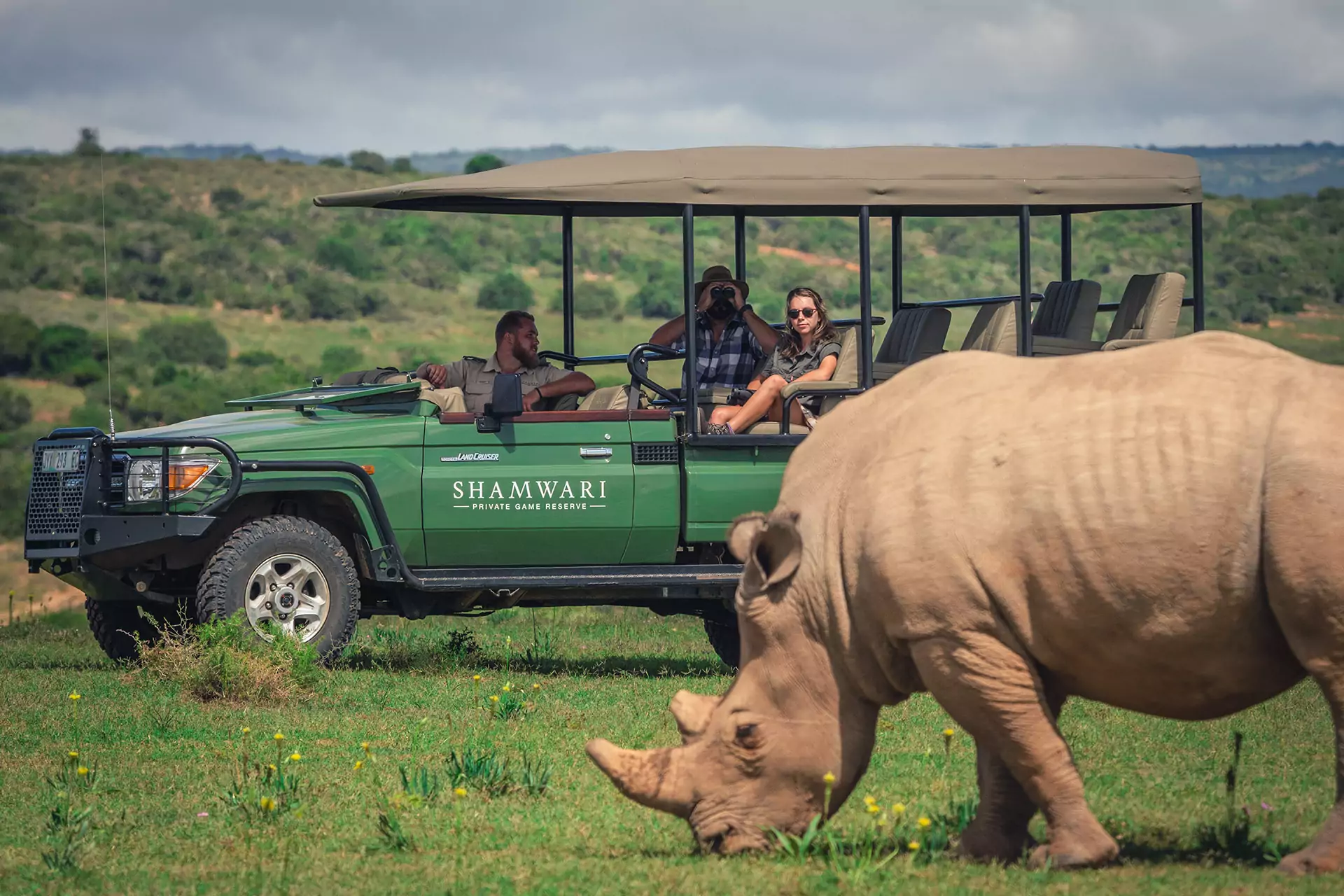Holidaymakers regularly depart Cape Town in a tide of traffic that makes soccer moms feel like amateurs. Many wash up in the seaside sprawl of Hermanus but, if they ventured a little further, they’d find the wonder and tranquillity they might have been seeking.
Words & Photos: Anton Crone
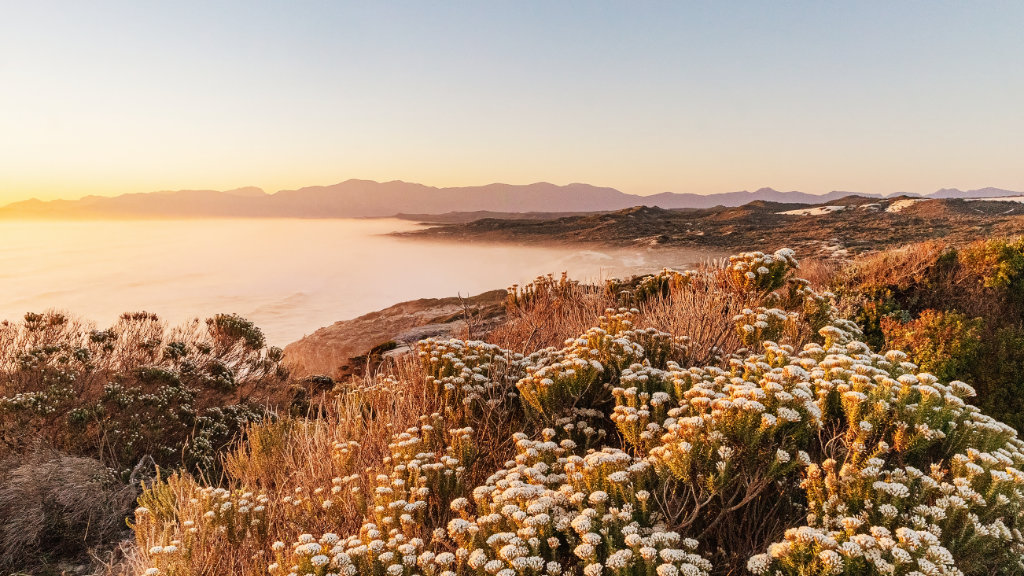
Landscapes Gareth Williams (Photo Gareth Williams)
Looking out from Klipgat Cave, the ocean sweeps west flanked by the curving coastline of Walker Bay. Hangklip stands sentinel in the distance and the faint spires of the Cape Peninsula lie beyond, the last ghostly reminder of terrestrial life before the ocean vanishes over the horizon.
Around 70 000 years ago, our ancestors living in this shelter would have gazed over dry land. The oceans had receded during one of Earth’s glacial periods, and they hunted animals, foraged in fynbos and drew crystal water filtered by limestone. When the oceans eventually returned, the bounty of marine life, flora and fauna meant humans still thrived here age after age until the last inhabitants, the Khoi Khoi, were all but eradicated by white settlers, and the flora and fauna gave way to the plough. Today there are few places left where we can reignite our connection with nature.
Now we are part of an era of compassion, culture and conservation, and much of what had disappeared has been restored here in Walker Bay Fynbos Conservancy, a remarkable environment that, counter to the usual tide of human ‘progress’, is steadily expanding.
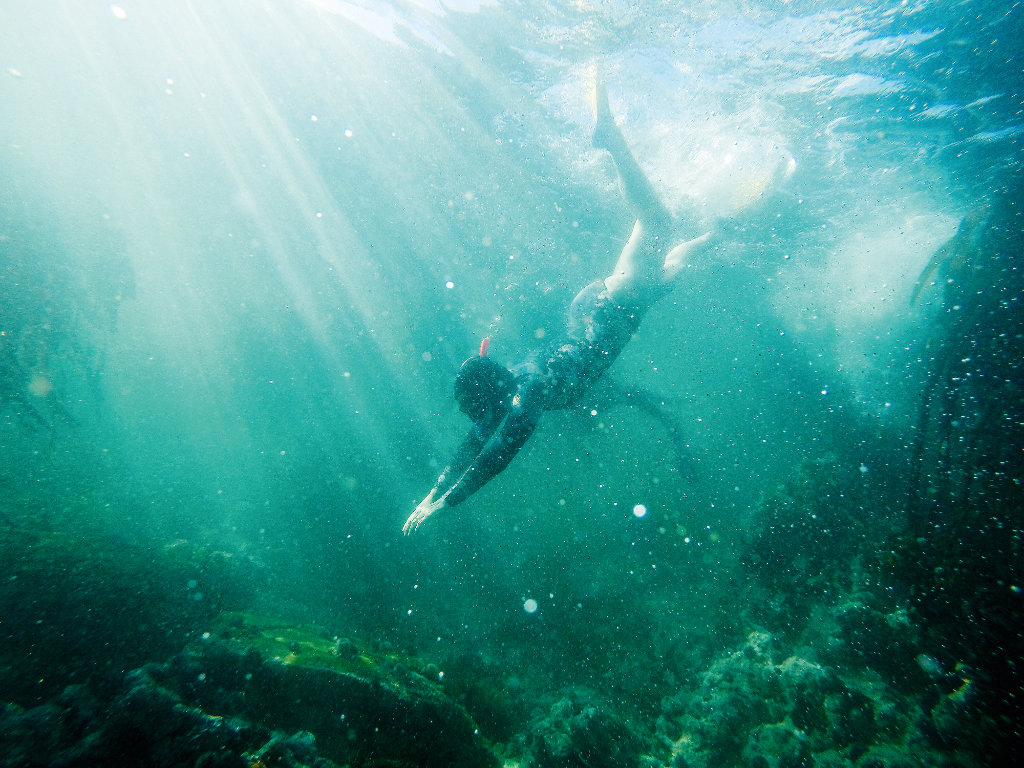
The author’s wife dives off De Kelders to explore the kelp forest.
A few kilometres inland from the cave is Grootbos Private Nature Reserve, the seed of the conservancy, a rare place that has left me humbled and amazed. If the view from the cave is extraordinary, from the slopes of Grootbos it’s stupendous. The curve of the coastline is remarkable for its endless expanse and lack of infrastructure, much like it would’ve been at the time of the Khoi Khoi and time before that. If this were France or Spain it would be littered with buildings leaning on the ocean’s edge but thankfully, it’s protected by Cape Nature and other members of the conservancy.
It was this view that motivated Grootbos founder, Michael Lutzeyer, and his family to buy a small 123-hectare farm here in 1991 as a holiday home – the diversity of flora particularly inspired his father, Heiner, to invest and retire here. Their endeavour led to a small tourism venture that took a new direction in 1997 when a young botanist, Sean Privett, signed on as a guide and conservation manager. Sean soon realised they were sitting on a marvel of floral diversity.
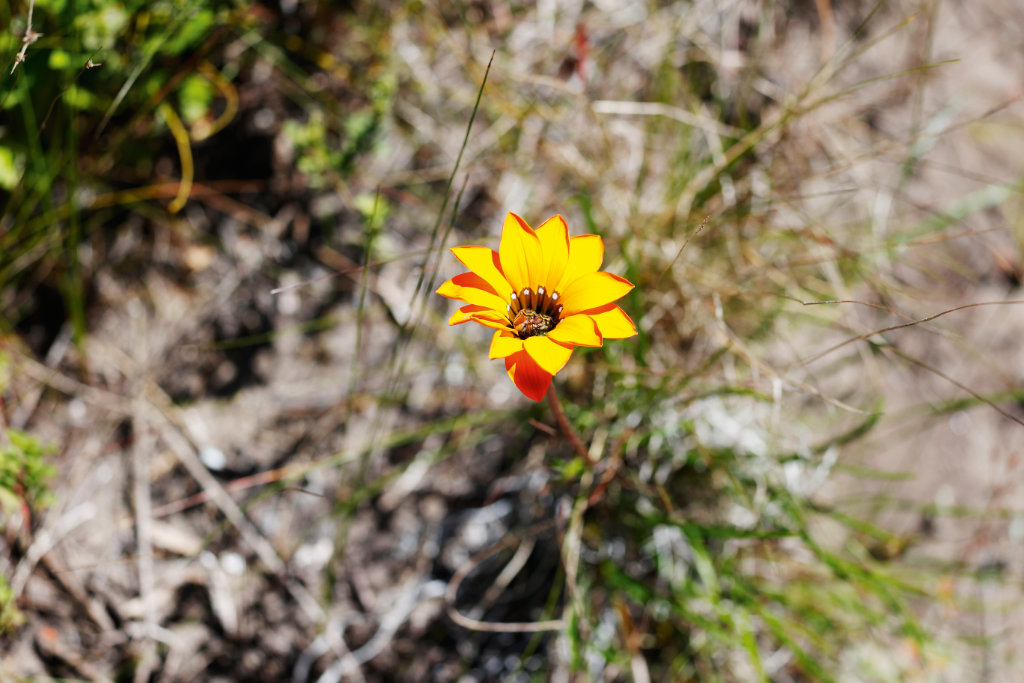
Patterns on the Gazania pectinata flower resemble female monkey beetles, attracting male beetles that in turn pollinate the flowers. (Photo Sarah Crone)
Since then, botanical studies and conservation efforts have intensified and a remarkable number of plant species have been discovered, some completely new to science. Grootbos has grown by incorporating neighbouring farms, and restoring the land to its natural habitat so that it’s now over 2 500 hectares in size. New insect discoveries are taking place, and mammals thought lost are returning to this renewed environment. Just as significantly, more and more landowners are inspired to turn part or most of their land over to nature and join Walker Bay Fynbos Conservancy.
Riding in a safari vehicle here is unlike a typical wildlife reserve. In Grootbos, you stop for flashes of colour to appreciate shrubs, the flight of bees and other insects. If you were to do this every time it occurred you’d hardly move a few metres. A guide like Gareth Williams, expounding on the intricacies of one single flower, can go down a rabbit hole of kaleidoscopic proportions: the means of pollination, the importance of one particular insect to that process, why it’s attracted to that flower, their dance, the symbiosis, its importance to the ecosystem and ultimately how it mirrors all life. And then you move on to the next plant and the story begins with a new cast of wonderful characters.
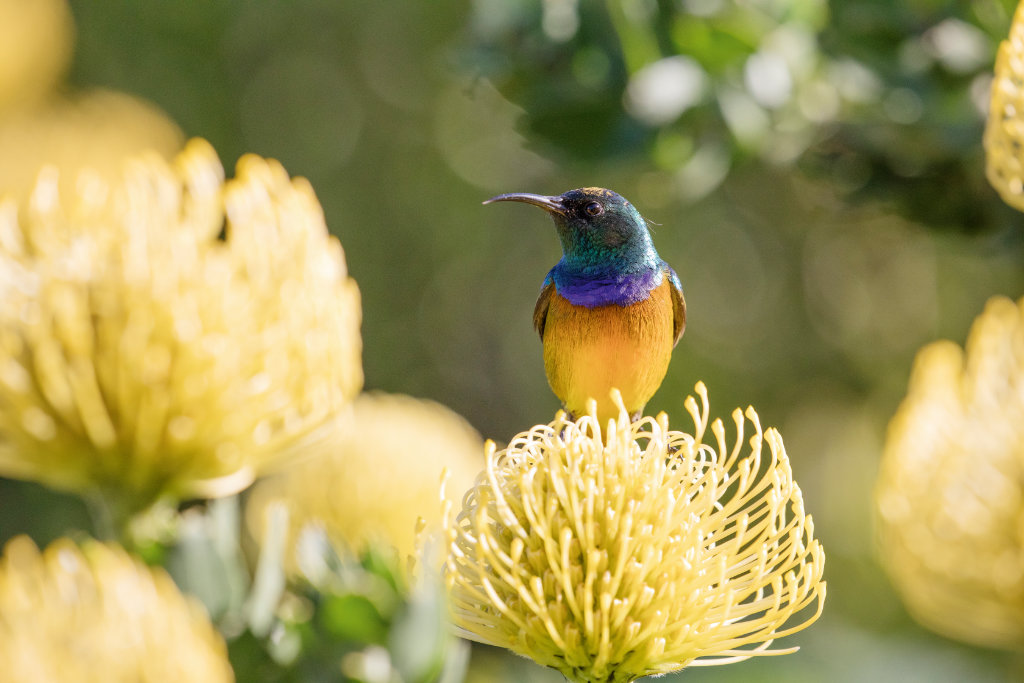
As an orange-breasted sunbird delves into the base of a flower to feed on nectar, pollen is placed on its head by the incurved styles.
One remarkable tale is the relationship between the monkey beetle and the gazania pectinata flower. ‘You see those markings at the base of each petal,’ said Gareth as we gazed at a bunch of orange blossoms. ‘They resemble the back of female monkey beetles, and they’re thought to act as decoys to attract males. So, a male will fly over and see this cluster of beautiful females, and whoop! He’ll descend on them and in turn pollinate the flower.’
It’s not just about blossoms. A pair of ancient milkwood forests, thought to be among the largest in the world, surround Forest Lodge and its sister, Garden Lodge. The canopy seldom reaches higher than six metres and trails weave beneath boughs twisted upon those of other trees like ancient lovers. It makes for an intimate experience as branches groan and whisper with the breeze. During one quiet interlude, our guide, Jo de Villiers, stopped and put her ear to a tree trunk. After a short while, she smiled to herself and invited me to try. ‘Listen carefully,’ she said. I heard a steady clicking sound deep in the bough. In surprise, I looked at Jo. ‘A clicking sound – did you hear it? It was drinking.’
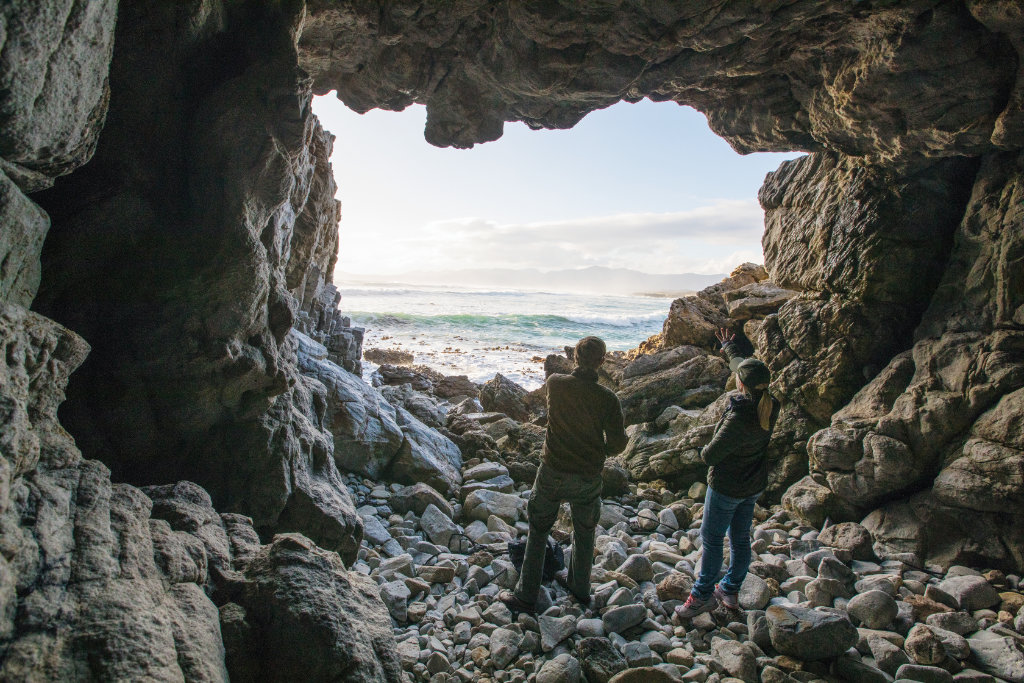
One of the grand windows of Klipgat cave, our ancestral home where stone tools, bones and human remains were discovered, indicating the presence of Middle Stone Age people an estimated 70 000 years ago.
At one point Jo walked up to the gnarled trunk of a tree that’s heavy boughs were spread so wide it was hard to say where they ended. ‘This one’s about 800 years old, and what’s wonderful is the way it survives,’ she said, pointing to a hollow in the base of the tree. She explained that it’s not a sign of an ailing tree: the centre had become deadwood, slowly decayed by fungus. As it decays the minerals stored over the years are released and used once more by the tree. In tandem with decaying leaves and branches that enrich the soil and roots, this ancient tree and its neighbours are nourishing one another, helping the forest live longer. Another tree a few metres away is about 1 200 years old. Above us, the branches of these ancient beings were intertwined.
The more you learn the more familiar you become, so when you’re walking flanked by flowers and trees, you’re almost walking among friends. Combine that with the chirruping birds, insects abuzz, amphibians, reptiles and mammals that are returning to their restored habitat, and you’re on the stage of an incredible pageant with myriad performers.
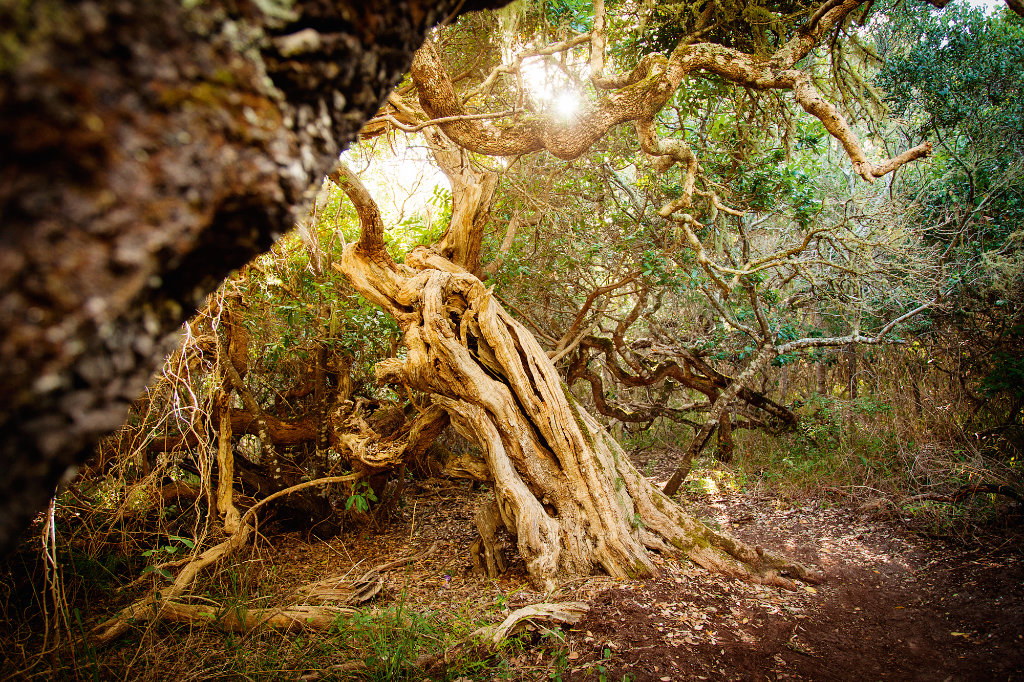
There are just 10 milkwood forests of this type on earth, all constrained to the Stanford-Gansbaai area, of which only four are officially protected on Grootbos Private Nature Reserve.
One of the lead actors is fire. During our second visit to Grootbos in October last year, my wife and I had been invited by Michael to ‘an extraordinary spectacle’ which he wouldn’t divulge. We imagined the brief flowering of an ephemeral blossom or the mating dance of a peculiar insect. Our wondering vanished when we saw a great swathe of fynbos up in flames.

We were greeted by a remarkably upbeat Michael who ushered us quickly into a safari vehicle and sped off towards the smoke. As we bounced along, in his German/South African accent he enthused that this was the spectacle he’d promised: the wonder of the burn. There were fire-crews on site from various agencies including Working on Fire and Gansbaai Municipality. Headquarters had been set up in a large tent and a control vehicle stood by where specialists monitored screens displaying wind data and drone footage relaying infra-red heat signatures. The controlled burn of 150ha was taking place on a part of Grootbos that hadn’t burned for more than 14 years. This was a vital blaze that would rejuvenate the flora, setting pods to burst so they spread seeds, and awakening those which had been lying dormant in the soil for years – decades even. Michael’s face was alive with the promise of new discovery as he watched the flames grow higher and higher.
Meeting Sean Privett that evening, he told us about the devastating fire of 2006 that began some 50km away, driven this way by gale-force winds. It engulfed a great deal of Grootbos destroying newly built Forest Lodge and a part of the milkwood forest. ‘But the wonder of it,’ Sean said, ‘was all the new species.’
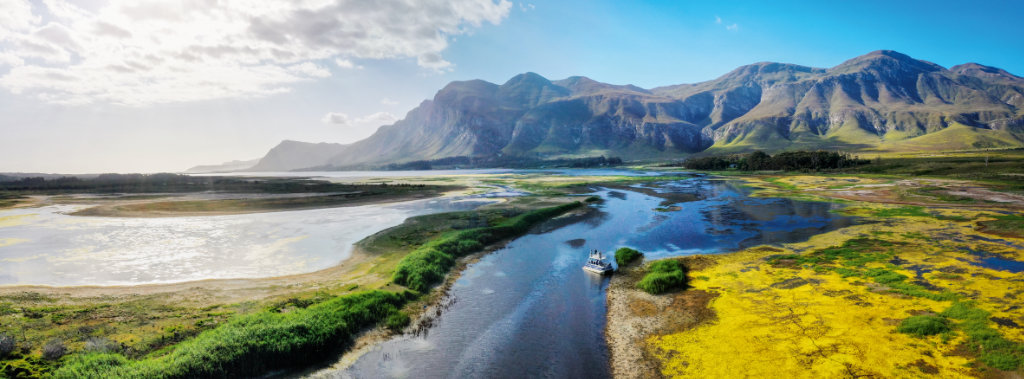
The Klein River and the Hermanus Estuary bird sanctuary –a twitcher’s paradise. A cruise on the Lady Stanford is a must-tick item. We saw five lifers and many extraordinary views.
By 2006, Sean and his team had identified 680 species on Grootbos, a staggering number considering he’d determined there were half that when he first began his study in 1997. After that blaze,’ he said, ‘we recorded another 70 species we didn’t know existed here.’
To date, over 860 species have been recorded. Among them are seven new to science, four of which occur nowhere else on Earth. Some of them were discovered by Heiner Lützeyer, including Lachenalia lutzeyeri named for him after he found it on the upper slopes of Witkransberg in the wake of a small fire in 2004. Thousands of them appeared on the reserve’s sandstone ridges after the 2006 blaze. By year three they’d all but disappeared, waiting patiently underground for the next fire to bloom.
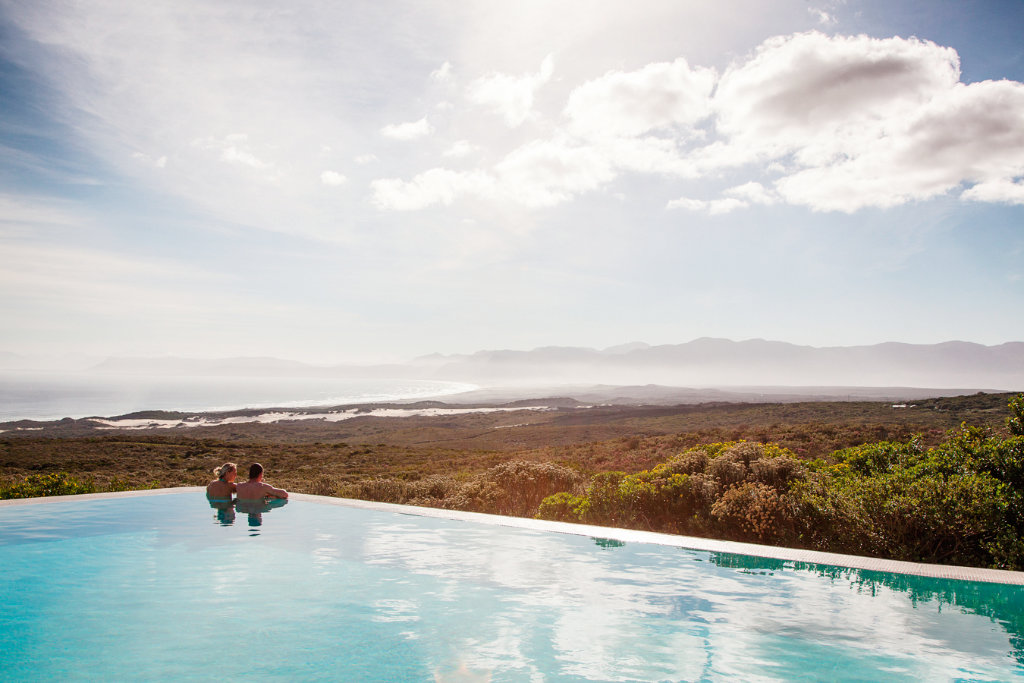
Forest Lodge has been built to take in the view of Walker Bay from every vantage point, be it the suites, dining room, lounge, patio or pool.
The next day we drove up a rocky track to reach the summit of Witkransberg. Lachenalia lutzeyeri may have been hibernating but we were flanked by scores of other colourful plants. The biomes changed from proteas and ericas that thrive in limestone to plants that fare best in sandstone. The last beautiful thing we encountered was the view from the top.
The scene encompassed the greater story… of Walker Bay Fynbos Conservancy and the people who have the foresight to preserve this environment: 48 landowners, including six nature reserves over an area spanning 22 000ha. A full 11% of the Cape Floral Kingdom species are found here. In the middle distance was Lomond Winery, the fruits of which we’d paired with food surrounded by a meticulous collection of local wines in Forest Lodge’s cellar. Just beyond Lomond was Farm 215, a private reserve and one of the other fine stays to be had in the area. At the southern foot of Witkransberg was Sean Privett’s own farm, Witkrans, offering self-catering cottages and a launch pad for multi-day hiking trails. Nearby Bodhi Khaya is a retreat where medi-tation and wellbeing are at the core of the nature experience and guests can help replant what was once a prominent milkwood forest.

Forest Lodge has been built to take in the view of Walker Bay from every vantage point, be it the suites, dining room, lounge, patio or pool.
There are 44 other landowners like them. I met quite a few while attending a meeting at Bodhi Khaya where they discussed the next step in preserving the flora and fauna: ratifying part of the conservancy as a protected area. I also learnt about their remarkable work in community development.
The social projects they have created are as varied as the colours of fynbos, and Grootbos’ involvement is extensive. Established in 2003, the Grootbos Foundation has education, conservation, sport and entrepreneurship programmes at its core, supported through funds from tourism and donations from all over the world.
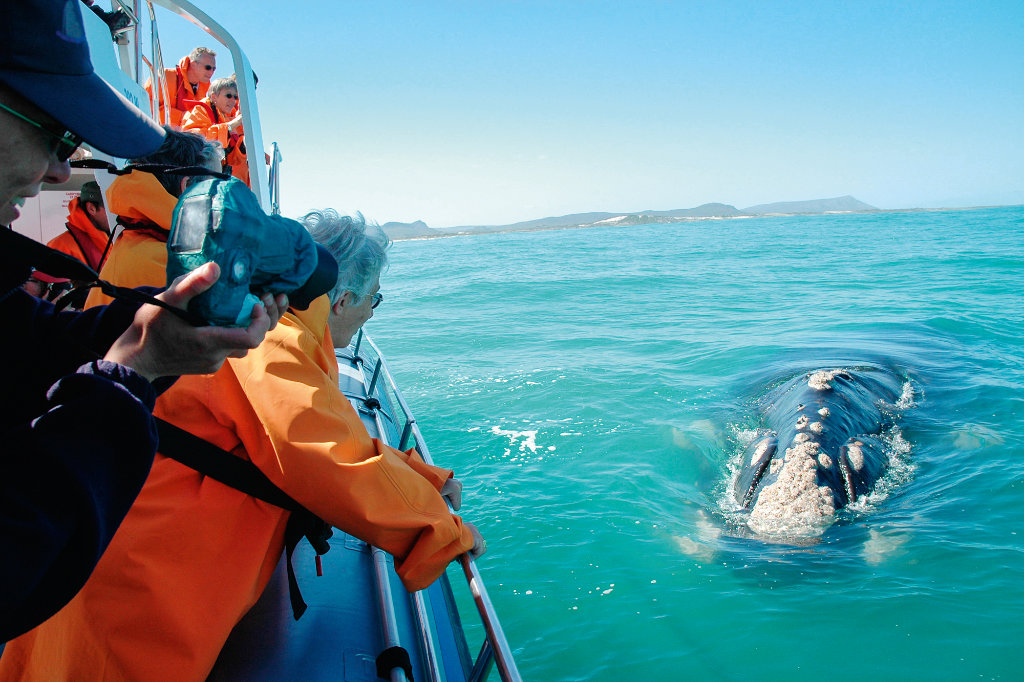
Ocean safaris out of Gansbaai take in the ‘Marine Big Five: whales, dolphins, seals, sharks and penguins.
More than 10 000 people benefit from the foundation each year. You feel it, especially when you meet the Grootbos team, some 80% of whom are from local disadvantaged communities. You get a sense that they’re a valued part of this story, not just ‘staff’. In the decade I’ve been writing about eco-tourism and community development in Africa, no single organisation has come close to the scale and success of this. Perhaps the surrounding nature is the inspiration.
Isn’t it humbling how fynbos is spurred on to new growth by fire; how trees young and old replenish forests by sharing nutrients. As Jo reminded me: ‘Without going through fire, your soul doesn’t grow.’ And I’m left thinking how sharing wisdom and wealth benefits the whole as a perfectly functioning ecosystem, in full bloom.
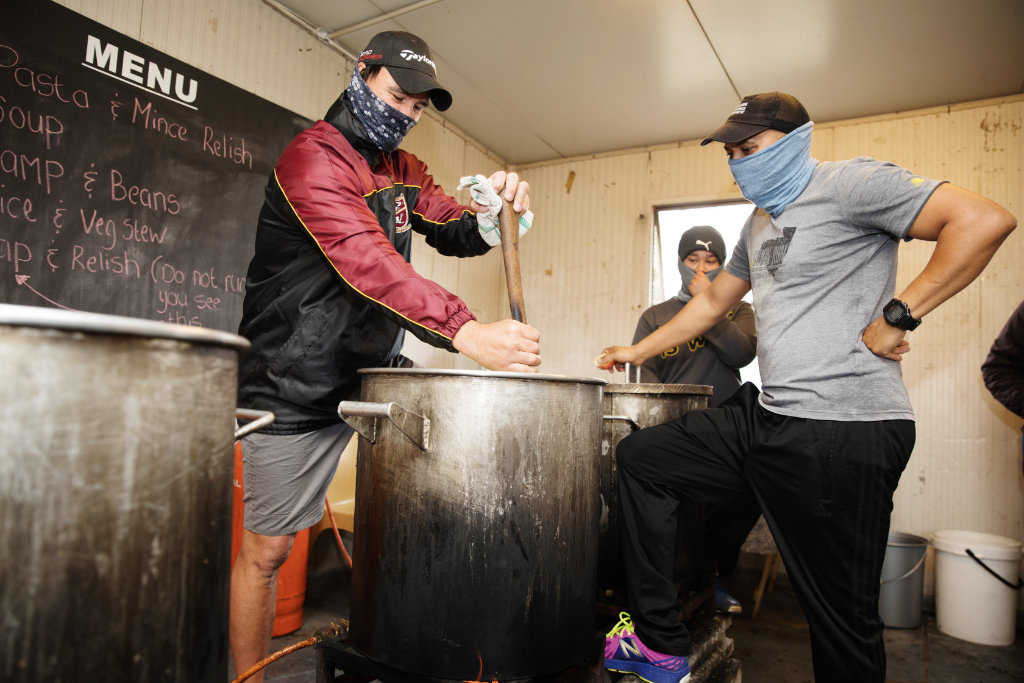
The Grootbos Foundation Team and volunteers got to work providing food to vulnerable people in the local communty during Lockdown.
Anecke Valentine
Grootbos head guide – Married to the work
After leaving school, Anecke struggled to make ends meet but embarking on horticulture and life skills courses at Grootbos’ Green Futures College in 2009 changed things. ‘When you start at college they ask where you see yourself, and I knew I wanted to go into nature guiding.’ She was soon being mentored by Grootbos’ guides and when her Field Guides Association of Southern Africa accreditation was complete, she climbed the ranks to become head guide in 2017. Staff say she’s a wonderful leader, confident and calm. Asked about family life, she laughs: ‘Kids? No. I’m married to the work.’
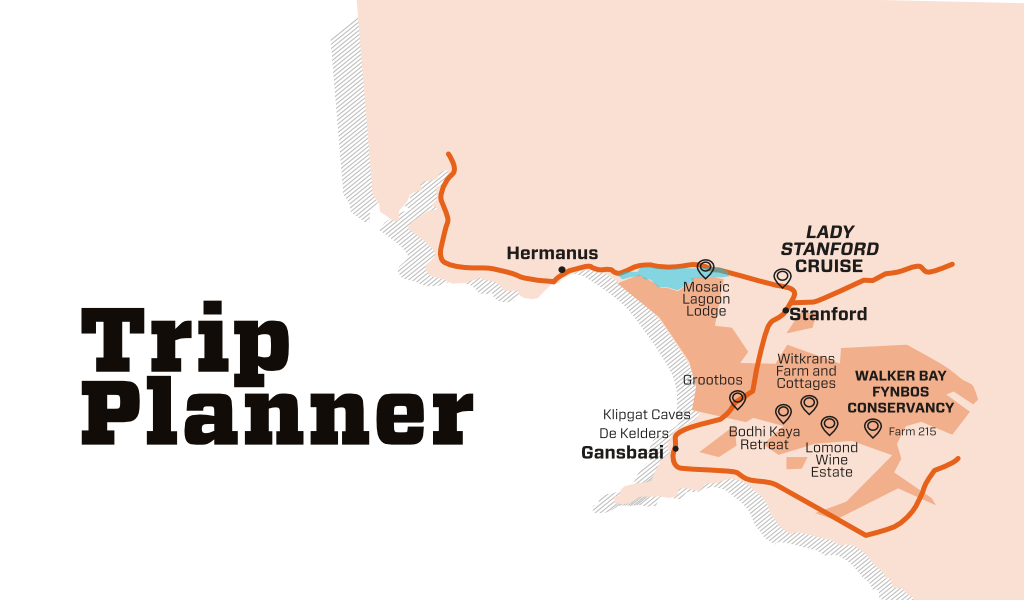
Grootbos is about two hours from Cape Town if you take the N2, turn onto the R316 at Caledon, then the R326 to Stanford. The entrance is 12km south of Stanford on the R43. Alternatively, take the scenic coastal route: leave the N2 on the M165, turn left onto the R44, then take the R43 through Hermanus and beyond to Stanford.
Do This
– inclusive to Grootbos guests:
• The guided botanical 4×4 tour and walk through the milkwood forests are a must.
• Horse ride through the fynbos.
• Join the ‘Living the Future’ tour exploring how Grootbos benefits the local community and environment.
• Explore Klipgat Cave.
• The meals made with locally sourced produce are a delight. Top of my list is the ‘Bang Bang’ starter, Eggs Benedict, and the unique single varietal fynbos honey – only available on the reserve.
Additional experiences like marine safaris, river cruises, beach horse rides and more can be booked in advance or during your stay.
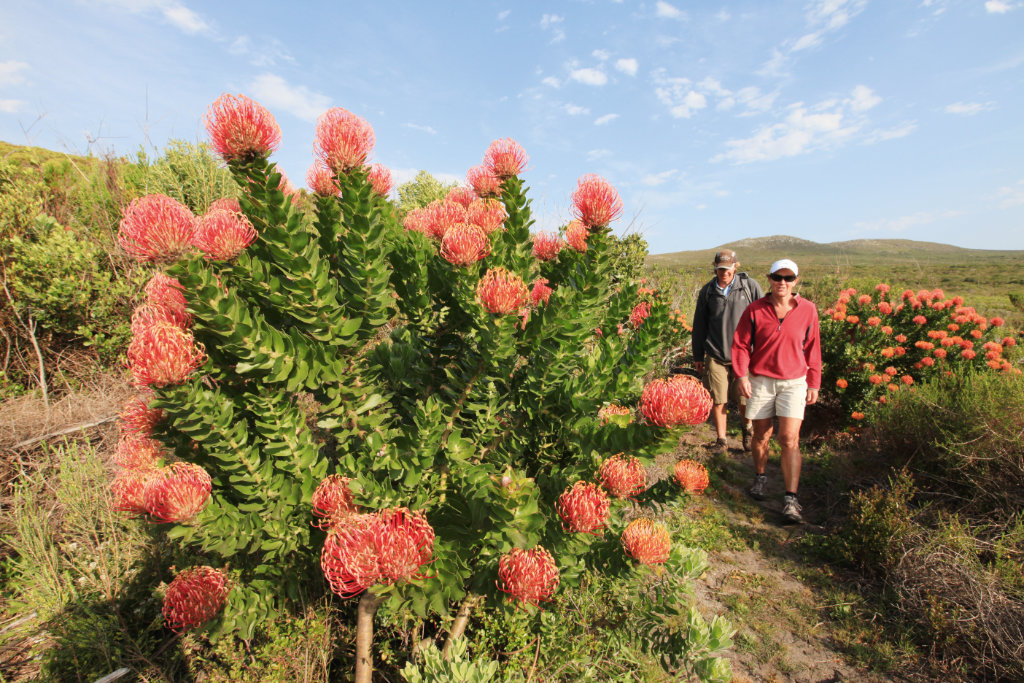
Fynbos Hiking Trail
The Fynbos Trail
A two-night nature experience, either as a fully guided and catered slackpacking trail or do-it-yourself. The trail takes hikers along a beautiful stretch of coastal and mountain fynbos and remote forests. Highlights include learning about the exceptional diversity, threats and ecological wonders of the region, farm style hospitality, locally sourced meals and expert guides.
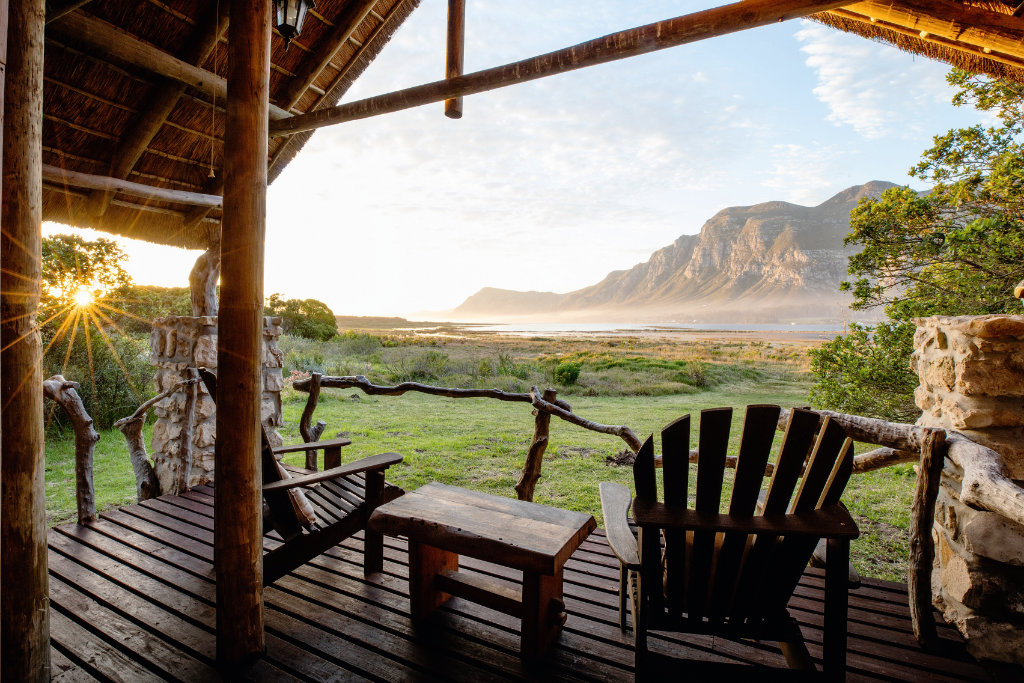
Mosaic Lodge
Lady Stanford River Cruise
Take a scenic cruise along the Klein River towards Hermanus Estuary Bird Sanctuary. The estuarine area is home to over 120 bird species. The Lady Stanford is a double decker pontoon carrying 26. R225pp; exclusive use
R3 500 (26 Max)
066 3749 386
ladystanford.co.za
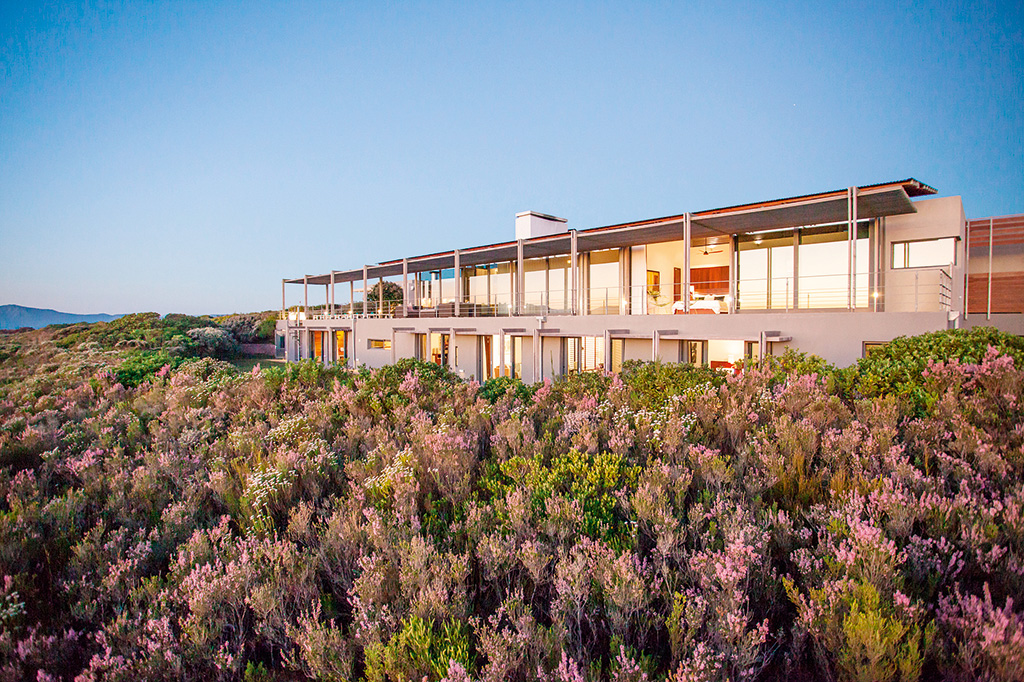
Grootbos Villa
Stay Here
Grootbos Private Nature Reserve
Forest Lodge
Contemporary architecture enhances the surrounding flora and incredible views of Walker Bay – 16 freestanding suites are linked by trails through milkwood forest and each suite opens onto rich fynbos.
Garden Lodge
A more family-orientated lodge with 11 modern, freestanding suites secluded deep in the milkwood forest linked by trails. Some suite’s viewing decks put you just above the forest canopy, others are shaded beneath ancient trees. Both lodges from
028 384 8053, grootbos.com
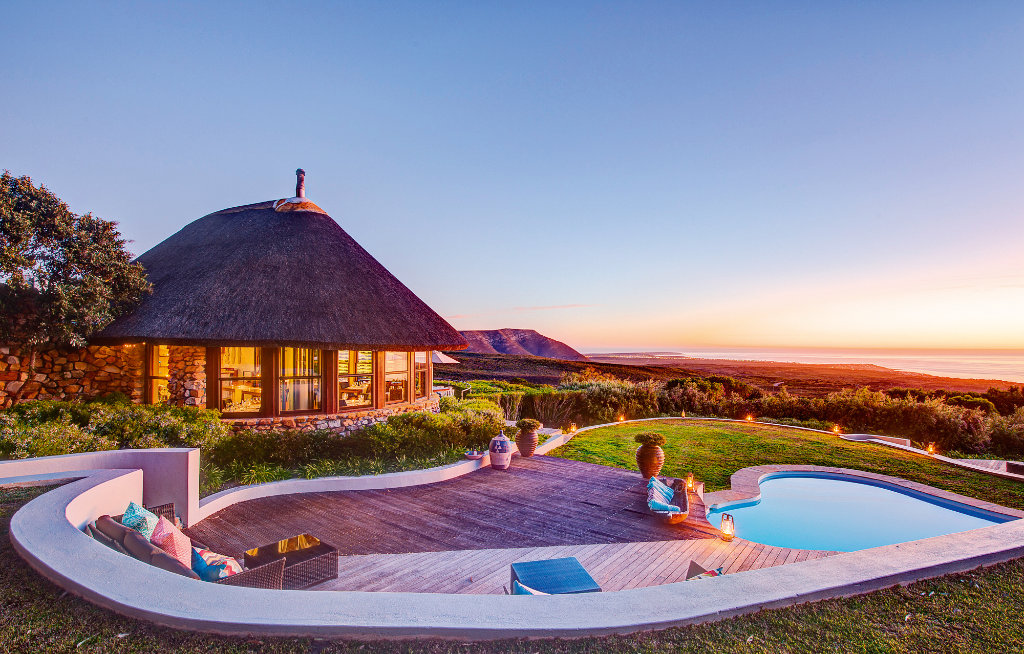
Grootbos Garden Lodge
Private Villas
Two expansive villas are marvels of contemporary design where groups of up to 12 guests can enjoy the services of a private chef, butler and nature guides.
028 384 8053, grootbos.com
Mosaic Lagoon Lodge
Made up of just five suites on the edge of Hermanus Lagoon in the north of Walker Bay Fynbos Conservancy, this lodge embodies luxury and exclusivity. Watch the mist roll in over the water and enjoy wonderful birdlife and stunning sunsets.
076 313 2814, mosaiclagoonlodge.co.za
READ: Under Milkwood in the Overberg
Bodhi Khaya Retreat
Not just a meditation and yoga centre, Bodhi Khaya offers health and wellness experiences which include nutrition, body work, stress reduction, shamanism and spiritual and ecological education.
072 385 6978, bodhikhaya.com
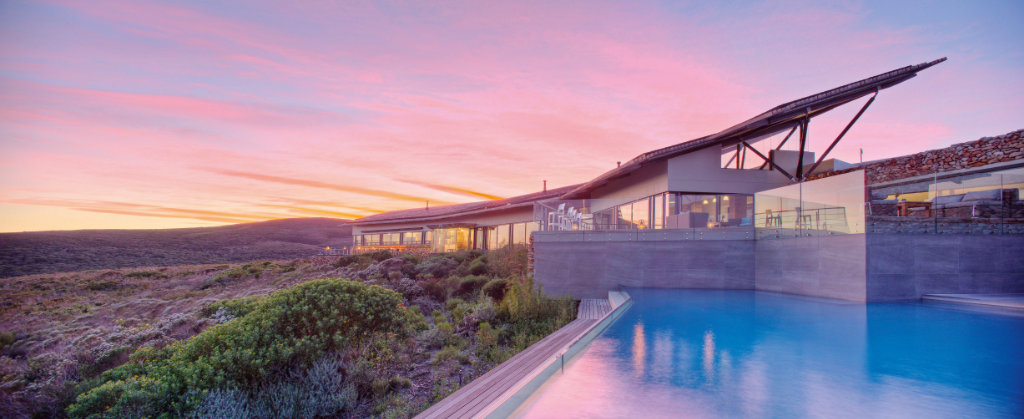
Grootbos Forest Lodge
Farm 215
A secluded retreat with an overpowering sense of space, and a sanctuary for endemic fynbos, mammals, birds and other creatures, Farm 215 enjoy undisturbed views over the coastal plains towards the ocean.
Follow us on social media for more travel news, inspiration, and guides. You can also tag us to be featured.
TikTok | Instagram | Facebook | Twitter
ALSO READ: 11 “workation” destinations in South Africa to work remotely









